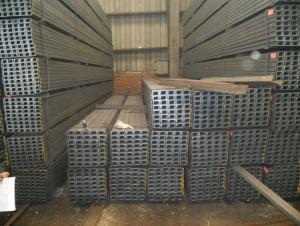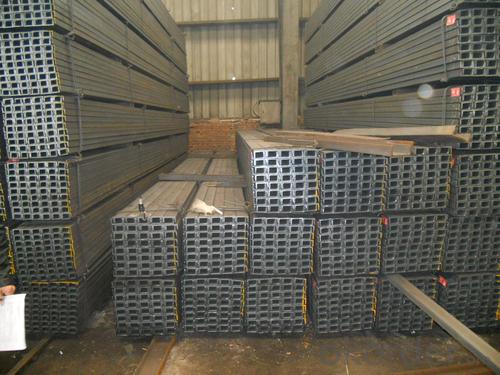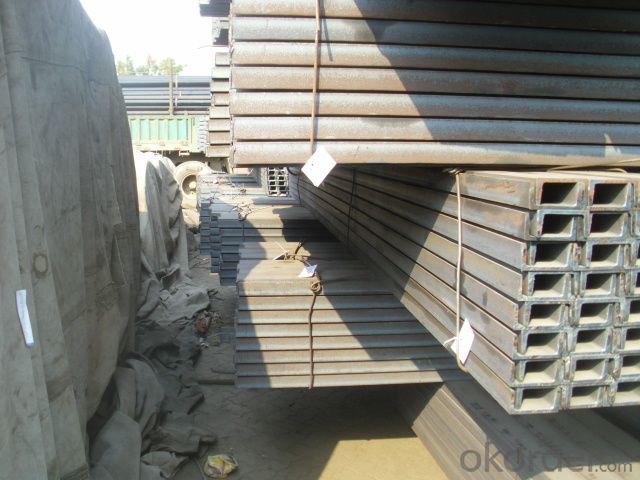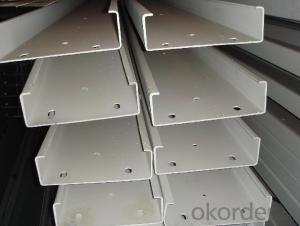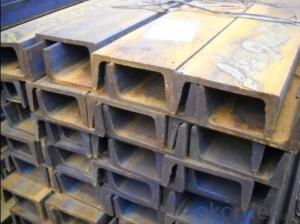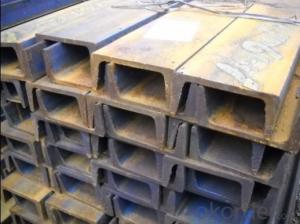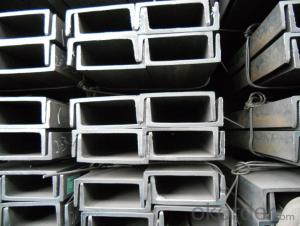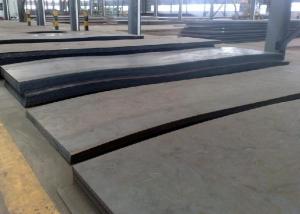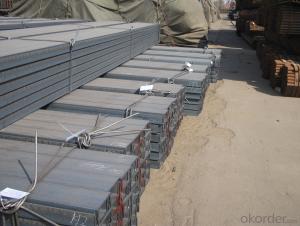Prime Hot Rolled Steel U Channel GB Standard
- Loading Port:
- China main port
- Payment Terms:
- TT OR LC
- Min Order Qty:
- 100 m.t.
- Supply Capability:
- 10000 m.t./month
OKorder Service Pledge
OKorder Financial Service
You Might Also Like
Product Description:
OKorder is offering Prime Hot Rolled Steel U Channel GB Standard at great prices with worldwide shipping. Our supplier is a world-class manufacturer of steel, with our products utilized the world over. OKorder annually supplies products to African, South American and Asian markets. We provide quotations within 24 hours of receiving an inquiry and guarantee competitive prices.
Product Applications:
Prime Hot Rolled Steel U Channel GB Standard are ideal for structural applications and are widely used in the construction of buildings and bridges, and the manufacturing, petrochemical, and transportation industries.
Product Advantages:
OKorder's Prime Hot Rolled Steel U Channel GB Standard are durable, strong, and wide variety of sizes.
Main Product Features:
· Premium quality
· Prompt delivery & seaworthy packing (30 days after receiving deposit)
· Can be recycled and reused
· Mill test certification
· Professional Service
· Competitive pricing
Product Specifications:
Manufacture: Hot rolled
Grade: Q195 – 235
Certificates: ISO, SGS, BV, CIQ
Length: 6m – 12m, as per customer request
Packaging: Export packing, nude packing, bundled
| GB STANDARD CHANNEL | ||||||
| SIZE(MM) | h(mm) | b(mm) | s(mm) | t(mm) | kg/m | length |
| 50X37x4.5x7 | 50 | 37 | 4.5 | 7 | 5.438 | 6m,12m |
| 63X40x4.8x7.5 | 63 | 40 | 4.8 | 7.5 | 6.634 | 6m,12m |
| 80x43x5x8 | 80 | 43 | 5 | 8 | 8.045 | 6m,12m |
| 100x48x5.3x8.5 | 100 | 48 | 5.3 | 8.5 | 10.007 | 6m,12m |
| 120x53x5.5x9 | 120 | 53 | 5.5 | 9 | 12.059 | 6m,12m |
| 140x58x6x9.5 | 140 | 58 | 6 | 9.5 | 14.535 | 6m,12m |
| 140x60x8x9.5 | 140 | 60 | 8 | 9.5 | 16.733 | 6m,12m |
| 160x63x6.5x10 | 160 | 63 | 6.5 | 10 | 17.24 | 6m,12m |
| 160x65x8.5x10 | 160 | 65 | 8.5 | 10 | 19.752 | 6m,12m |
| 180x68x7x10.5 | 180 | 68 | 7 | 10.5 | 20.174 | 6m,12m |
| 180x70x9x10.5 | 180 | 70 | 9 | 10.5 | 23 | 6m,12m |
| 200x73x7x11 | 200 | 73 | 7 | 11 | 22.637 | 6m,12m |
| 200x75x9x11 | 200 | 75 | 9 | 11 | 25.777 | 6m,12m |
| 220x77x7x11.5 | 220 | 77 | 7 | 11.5 | 24.999 | 6m,12m |
| 220x79x9x11.5 | 220 | 79 | 9 | 11.5 | 28.453 | 6m,12m |
| 250x78x7x12 | 250 | 78 | 7 | 12 | 27.41 | 6m,12m |
| 250x80x9x12 | 250 | 80 | 9 | 12 | 31.335 | 6m,12m |
| 250x82x11x12 | 250 | 82 | 11 | 12 | 35.26 | 6m,12m |
| 280x82x7.5x12.5 | 280 | 82 | 7.5 | 12.5 | 31.427 | 6m,12m |
| 280x84x9.5x12.5 | 280 | 84 | 9.5 | 12.5 | 35.823 | 6m,12m |
| 280x86x11.5x12.5 | 280 | 86 | 11.5 | 12.5 | 40.219 | 6m,12m |
| 300x85x7.5x13.5 | 300 | 85 | 7.5 | 13.5 | 34.463 | 6m,12m |
| 300x87x9.5x13.5 | 300 | 87 | 9.5 | 13.5 | 39.173 | 6m,12m |
| 300x89x11.5x13.5 | 300 | 89 | 11.5 | 13.5 | 43.883 | 6m,12m |
FAQ:
Q1: How do we guarantee the quality of our products?
A1: We have established an advanced quality management system which conducts strict quality tests at every step, from raw materials to the final product. At the same time, we provide extensive follow-up service assurances as required.
Q2: How soon can we receive the product after purchase?
A2: Within three days of placing an order, we will arrange production. The normal sizes with the normal grade can be produced within one month. The specific shipping date is dependent upon international and government factors, the delivery to international main port about 45-60days.
Q3: How many tons of steel products could be loaded in containers?
A3: Usually the steel products are delivered by bulk vessel because of the large quantity and the freight. However, there are no bulk vessel enter some seaports so that we have to deliver the cargo by containers. The 6m steel product can be loaded in 20FT container, but the quantity is changed according to the size, usually from 18tons to 25tons.
Images:
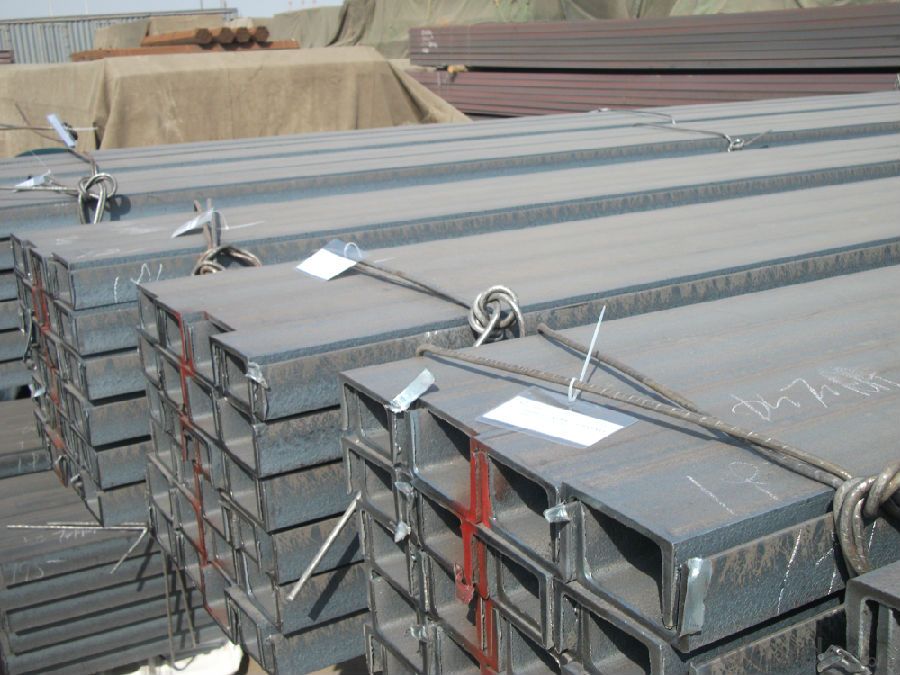
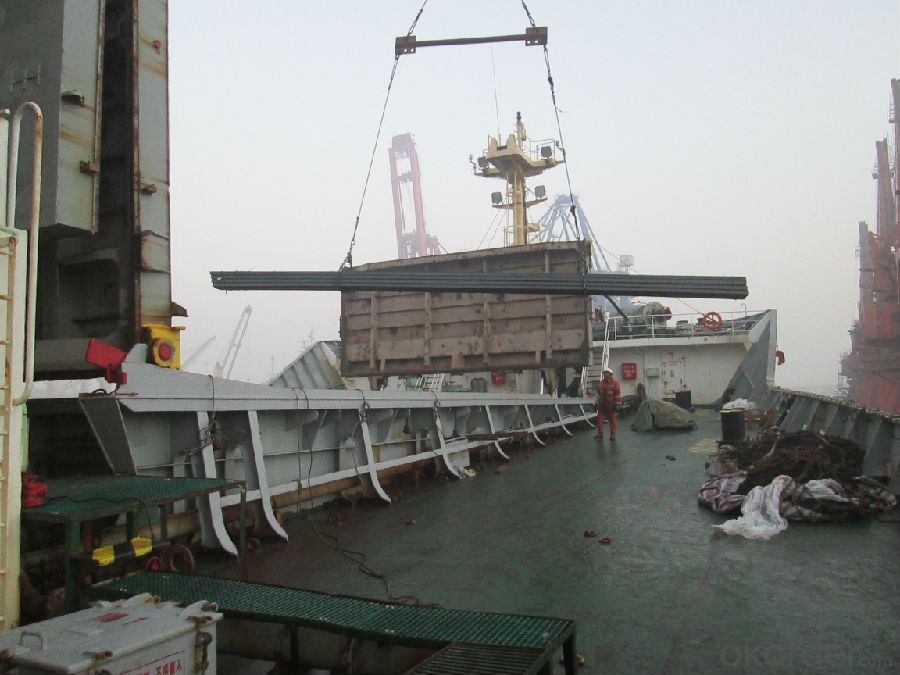
- Q: How are steel channels used in the construction of airports or terminals?
- Steel channels are commonly used in the construction of airports or terminals for various purposes. They are primarily used for structural support, providing strength and stability to the overall building design. Steel channels are often utilized as framing elements for walls, ceilings, and floors, ensuring a robust and durable infrastructure. Additionally, they can be employed to create specific areas such as baggage handling systems, walkways, or platforms, enhancing efficiency and functionality within the airport or terminal.
- Q: What type of channel is used for the type of room with a span of 4 meters?
- By experience, use 14# i-beam.
- Q: Are steel channels suitable for data center construction?
- Yes, steel channels are suitable for data center construction. They provide strength and durability required for supporting heavy equipment and infrastructure in data centers. Steel channels also offer flexibility for customization and ease of installation, making them a commonly used material in data center construction.
- Q: Are steel channels suitable for conveyor systems?
- Yes, steel channels are suitable for conveyor systems. Steel channels are commonly used in conveyor systems due to their strength and durability. They provide a sturdy framework for supporting and guiding conveyor belts, ensuring smooth and efficient movement of materials. Steel channels are capable of withstanding heavy loads and can be easily customized to fit specific conveyor system requirements. Additionally, steel channels offer excellent resistance to corrosion and wear, making them a reliable choice for conveyor systems in various industries such as manufacturing, mining, and logistics. Overall, steel channels are a preferred option for conveyor systems due to their robustness and ability to withstand the demanding operational conditions of such systems.
- Q: Can steel channels be used in the chemical industry?
- Indeed, the chemical industry finds steel channels to be highly applicable. With their remarkable strength, durability, and corrosion resistance, steel channels are frequently utilized across multiple industries, including the chemical sector. They serve as essential elements for structural support, while also being instrumental in constructing platforms, walkways, and equipment supports within chemical plants. Furthermore, steel channels exhibit exceptional resilience to both high temperatures and pressures, rendering them ideal for chemical processing and transportation. In summary, steel channels prove themselves to be an adaptable and dependable option for the chemical industry.
- Q: The reinforced welding off? Can the channel steel locked with expansion screws be taken out?
- The reinforced welding can knock down the. Of course, according to the actual situation of welding, adopt the corresponding method. If not all welded, along the side without welding hard hit with a crowbar or poking can. If the whole welding should choose weak side to start, if the first welding scar chisel chisel point mark, and then knock are much easier. There are many concrete methods and flexible use according to the actual situation.As long as the expansion bolts are not corroded, they can be removed. Remove the nut, screw the drop in point, loosen the expansion pipe, pull out, and then pull the screw.
- Q: Can steel channels be used for mezzanine office spaces?
- Yes, steel channels can be used for mezzanine office spaces. Steel channels provide strong support and structural stability, making them suitable for constructing elevated floors in mezzanine office spaces. They can effectively bear the weight of office furniture, equipment, and occupants, ensuring a safe and durable structure.
- Q: What are the standard lengths of steel channels?
- Different industries and manufacturers establish their own requirements and standards, leading to variations in the standard lengths of steel channels. However, there are commonly used standard lengths for steel channels, typically available in increments of 6 or 12 feet (1.83 or 3.66 meters). These standard lengths find widespread use in construction, manufacturing, and other sectors. Steel channels are commonly found in lengths of 20 feet (6.1 meters), 40 feet (12.2 meters), and 60 feet (18.3 meters), which are convenient for transportation, handling, and utilization in structural or fabrication projects. It is worth noting that although these are frequently encountered standard lengths, steel channels can also be custom-cut to meet the specific requirements of a given project. Additionally, regional or industry-specific standards may introduce variations in standard lengths. To obtain more precise information regarding the standard lengths of steel channels for a particular application, it is advisable to consult relevant industry standards, such as those established by organizations like the American Society for Testing and Materials (ASTM) or the American Institute of Steel Construction (AISC).
- Q: What are the different load distribution methods for steel channels?
- Steel channels in construction and engineering applications commonly employ various load distribution methods to ensure even distribution and maximize structural integrity and strength. 1. Concentrated Load Distribution: Load is placed on specific points of the steel channel, typically used when certain areas or points require greater load-bearing capacity. 2. Uniform Load Distribution: Load is evenly distributed along the entire length of the steel channel, suitable when the load is uniformly distributed or when no specific point requires additional load-bearing capacity. 3. Partial Load Distribution: Load is distributed partially along the steel channel, focusing on specific sections or areas that require increased strength. This method suits situations with varying load requirements throughout the channel's length. 4. Cantilever Load Distribution: Applicable to steel channels fixed at one end, with the load placed at the free end. Commonly used in structures like bridges and balconies. 5. Distributed Load Distribution: Load is divided into smaller segments and distributed along the length of the steel channel. This method is useful when the load is unevenly distributed or when varying load requirements exist at different points. 6. Point Load Distribution: Load is concentrated at specific points along the steel channel, typically utilized when certain points require greater load-bearing capacity. It is crucial to consider factors such as structure type, intended application, load requirements, and engineering specifications when selecting the appropriate load distribution method. Consulting a structural engineer or design professional is essential in determining the most suitable load distribution method for a specific steel channel application.
- Q: What is the minimum size of channel steel?
- The minimum size for the 5# channel channel, general specification for 50mm*50mm*3mm 50mm*50mm*4mm 50mm*50*mm5mm 50mm*50mm*6 mm, which is most commonly used, 50*50 is the right number, a digit number. Behind the thickness weight: General cross-sectional area 6.93cm2 theoretical weight 5.44kg/m, 5 channel theoretical weight is 5.438kg/m.
Send your message to us
Prime Hot Rolled Steel U Channel GB Standard
- Loading Port:
- China main port
- Payment Terms:
- TT OR LC
- Min Order Qty:
- 100 m.t.
- Supply Capability:
- 10000 m.t./month
OKorder Service Pledge
OKorder Financial Service
Similar products
Hot products
Hot Searches
Related keywords
